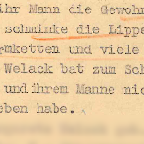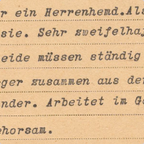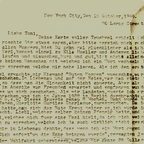Withdrawal of the "Transvestite Licence"

© Magnus-Hirschfeld-Society Berlin.
Gerd Katters "Transvestite Licence"

© German Federal Archives Berlin, © qualitatively reworked by Kai* Brust.
The only preserved "Transvestitenschein" (transvestite licence) in the form it probably looked like in the 1920s is that of transmasculine actor and carpenter Gerd Katter. He had folded it twice so that it would fit inside the pocket of a shirt.
The licence was a kind of identification document for trans people. It was issued in the 1920s primarily by the homosexual departments of the Berlin and Hamburg criminal police. In order to receive the licence, those affected had to present a medical report. They also had to be able to present the gender they identified with inconspicuously in public. In everyday life, the licence could have been helpful. Its holders were able to prove that appearing in their preferred clothing was tolerated by the police. The Berlin police had been issuing such a toleration in writing for the first time presumably in 1908, but probably not in the form of a certificate like the one Gerd Katter got.
From 1933, with the beginning of Nazi rule, the licences were increasingly withdrawn. If those affected continued to wear their preferred clothing, it was possible for the police to interpret this as a violation of police orders, which often led to arrests. The withdrawal of the licences is one of the reasons why most of these documents are no longer preserved today.






























